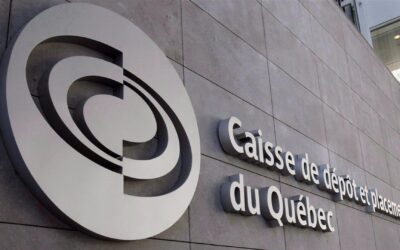Italian companies are highly undercapitalized compared to other major European countries, with shareholders representing just 42 percent of the balance sheet structure in the economy – as opposed to the 50 percent weighting seen in Germany, France, Spain, and the UK.
In contrast, Italian companies are funded to a greater extent by short-term debt, with short-term loans in Italy representing 44 percent of firms’ balance sheet, vs. 30 percent in the other four European countries – nearly 50 percent higher.
The smaller percentage of shareholders is due in part to the smaller size of the average Italian company. But that does not prevent Italian banks from funding those smaller companies. Indeed, considering the share of lending by size of the company, 53 percent of total bank lending goes toward small and medium enterprises (SMEs), while that percentage is below 30 percent in Spain and less than 20 percent in Germany, France, and the UK.
Italian banks typically lend to smaller, undercapitalized companies, using mainly short-term loans.
To a degree, this situation is an outgrowth of historical circumstances specific to Italy, its economy, and its companies. That said, the ability of Italy’s banks to provide funding to SMEs in the future is about to be impacted by the following factors:
- Basel IV Directive: Under the new regulation which strengthens capital requirements for the banking sector, banks may be required to lower their lending to corporates by up to 10 percent
- Covid-19 impact: The coronavirus pandemic, which has had an outsized effect on certain sectors, such as tourism and logistics, may require that banks review their risk appetite
- Supply chains and inflation: Global supply-chain disruption and growing inflation, already present at the beginning of 2022, have been exacerbated by the Ukrainian crisis, with the impact particularly strong on the manufacturing, logistics, and tourism sectors
Those factors come on top of the structural issues facing some sectors – including smaller profit margins and greater financial exposure – which are leading to a reduced risk appetite for banks, particularly in construction, agriculture, and some manufacturing segments.
As a result, there’s a growing risk of a credit crunch in some of the Italian economy’s most important sectors in the coming years, such as agriculture, constructions, manufacturing, retail, logistics, energy, IT and telecommunications, tourism, and professional services.
The Italian National Recovery and Resilience Plan (NRRP), which pairs funds from the EU with national commitments, has the potential to boost the economic recovery after the coronavirus pandemic impact by providing public funding for €236 billion. But the full implementation of the plan requires €180 billion in additional funds that companies have to find on the market, whether in form of debt or capital.
Given the potential credit-crunch risk, the ability of the Italian banks to provide financing will be limited, particularly for construction and manufacturing – the sectors in greatest need of financing to leverage the NRRP funds.
To avoid this perfect storm and prevent the risk of losing the NRRP funding, the government needs to create conditions to provide fresh capital to those sectors, supporting the companies in their post-Covid restructuring and enabling the banks to increase funding.
The capital could come from two sources: the stock market and private equity.
The first source, the stock market, is significantly smaller in Italy than in other European countries. The total value of the industrial companies listed on the Italian market is only 26 percent of the Italian GDP, as opposed to a ratio of around 50 percent-60 percent for Germany and Spain and above 100 percent for France and the UK.
Moreover, the Italian industrial ecosystem is probably not yet ready to significantly increase the number of listed companies quickly, given the smaller size of Italian firms on average and their unfamiliarity with governance and internal controls that are a prerequisite of listed companies.
Private equity represents a key player to providing fresh capital for the Italian industry, supporting the restructuring of the most impacted sectors, and fostering future growth.
While Italy’s private-equity sector is significantly smaller than other EU countries (with PE investments in Italy about one-quarter that of the UK’s or France’s and funding even smaller than that), the industry is growing rapidly. Moreover, the interest by foreign funds in Italian companies is growing even faster, with the potential of attracting tens of billions in euros in private equity funding in the coming years.
This money will need to be directed towards those sectors that must be restructured or that can benefit from the NRRP, including construction, agriculture, manufacturing, and tourism. While some of these sectors have not been traditionally considered fair game by private equity, opportunities will arise in the coming years, in specific subsectors with strong economic fundamentals and lower risk profiles, with a specific focus on:
- Reinventing the supply chain: Nearshoring critical components currently produced in Russia and, partly, in China and India
- Green transition and Europe’s defense: Increasing investments expected in aerospace & defence and energy & green transitions
Authors
Michele Paolo D’Angelo, Partner, Oliver Wyman
Marco Montagner, Principal, Oliver Wyman
Can’t stop reading? Read more
Ex-Carlyle CEO Kewsong Lee invests in USL, joins board as vice-chair
Ex-Carlyle CEO Kewsong Lee invests in USL, joins board as vice-chair The United Soccer League...
Axcel considers €700m divestment of Copenhagen-based consultancy Emagine
Axcel considers €700m divestment of Copenhagen-based consultancy Emagine Danish private equity...
La Caisse strikes $1.1bn deal for Australian renewables and battery pioneer Edify
La Caisse strikes $1.1bn deal for Australian renewables and battery pioneer Edify La Caisse, the...




